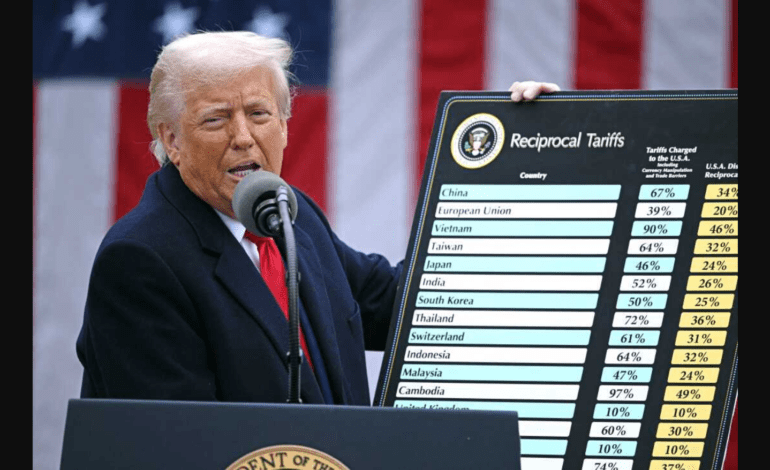
Trump’s second term: Executive orders redefine U.S. policy and shake foundations of U.S.–India relations
By: Dr. Avi Verma
Trump 2.0: A Deluge of 129 Executive Orders and Their Far-Reaching Impact
As President Donald Trump enters the heart of his second term, the White House has issued a staggering 129 executive orders, reshaping U.S. domestic and foreign policy at breakneck speed. This hyperactive phase of executive governance marks a stark intensification of the core pillars of Trumpism—nationalism, deregulation, immigration control, and a sharp pivot away from multilateral engagement.
At IndoUS Tribune, we believe it’s critical to evaluate not just the quantity, but the scope and consequences of these directives—especially as they affect civil liberties, public education, global partnerships, and U.S.–India relations.
Domestic Policy: Centralization, Culture Wars, and the Battle for Education
Many of these executive orders reflect an aggressive move to centralize presidential authority, often bypassing Congressional oversight.
- Executive Order 14149, titled “Restoring Freedom of Speech and Ending Federal Censorship”, seeks to curb what the administration views as ideological suppression by Big Tech and media outlets.
- In schools, Executive Order 14190, “Ending Radical Indoctrination in K-12 Schooling,” aims to remove curriculum content deemed “anti-American,” intensifying the cultural divide in education.
- On immigration, Executive Order 14159, “Protecting the American People Against Invasion,” has empowered National Guard deployments and drastically cut refugee admissions—a decision now under multiple legal challenges.
Foreign Policy: Hard Lines and Realignments
Trump’s second term has revived his “America First” doctrine with renewed vigor:
- Executive Order 14162, “Putting America First in International Environmental Agreements,” formally ended U.S. participation in key global climate pacts, drawing applause from fossil fuel interests and outrage from environmental groups worldwide.
- On the Indo-Pacific front, Trump has reinforced military cooperation with India, promoting naval operations under the Quad alliance to counterbalance China’s influence.
- Ideologically, his administration’s tougher stance on Islamic extremism has aligned with India’s own national security priorities.
Impact on India and the Indian Diaspora
While strategic defense and security ties between the U.S. and India appear stronger than ever under Trump’s leadership, several executive actions and administrative policies have raised red flags for Indian professionals, students, and the broader diaspora:
- Visa Reforms: Anticipated H-1B restrictions, though not yet codified as executive orders, are already manifesting through internal DHS memos and procedural delays. If implemented, they could severely restrict Indian tech workers—who make up over 70% of H-1B holders—and disrupt a vital talent pipeline that supports the U.S. economy.
- Student Visa Limitations: There’s growing concern over increased scrutiny of F-1 visa renewals and OPT (Optional Practical Training) extensions, affecting thousands of Indian students in American universities.
- Family Reunification Delays: The administration’s broader anti-immigration stance has led to longer green card backlogs for Indians—especially in the EB-2 and EB-3 categories—delaying dreams of citizenship and permanent settlement.
- Diaspora Sentiment: While a portion of the Indian American community supports Trump’s tough stance on national security and China, many feel alienated by the exclusionary tone of his immigration policies and rhetoric targeting immigrants.
- Trade and Business: Strained trade negotiations and tariffs imposed on Indian exports under Trump’s executive economic measures have complicated bilateral commerce, affecting small Indian business owners in the U.S.
In short, while the strategic handshake between Washington and New Delhi may remain firm, the grassroots impact of Trump’s second-term policies on Indian Americans is mixed—often leaving professionals, students, and families in limbo.
Governance by Decree: A Double-Edged Sword
What’s most remarkable about Trump’s second term isn’t just the content of these 129 executive orders—it’s the method of governance itself: policymaking by proclamation. While this top-down approach allows for fast action, it also tests the resilience of American democratic checks and balances.
At IndoUS Tribune, we remain vigilant in monitoring how these executive actions affect the Indian American community, U.S.–India ties, and the broader democratic landscape. Trump’s decisive—and often divisive—style resonates deeply with his political base, but its long-term legacy remains uncertain.
One thing is clear: this is not an era of nuance. It is an era of bold strokes, sharp lines, and relentless action.